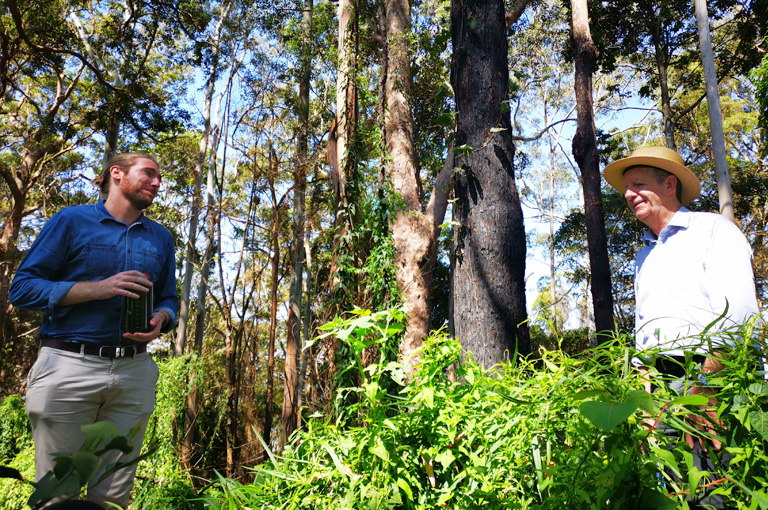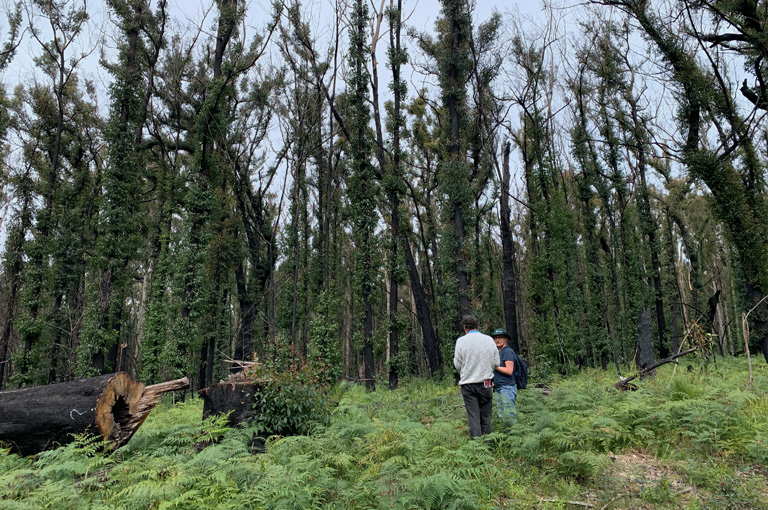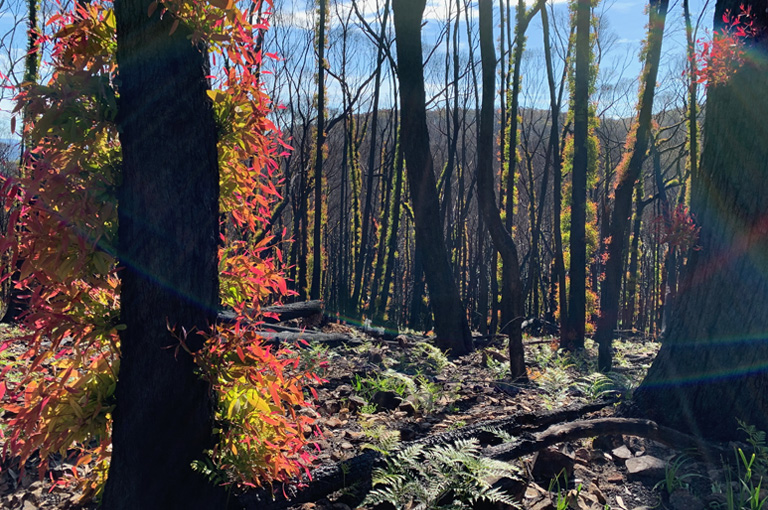
The first phase of the Bushfire Recovery Project, which aims to provide a science-informed response to the 2019-2020 bushfire crisis that optimises wildlife and landscape recovery, is winding up.
Led by Prof Brendan Mackey from Griffith University and Prof David Lindenmayer from the Australian National University in partnership with GER, the project is working to assess the impact of the devastating bushfires and track the recovery of south-eastern Australia’s forests.
“In the aftermath of the 2019-2020 bushfires, it is more critical than ever for us to develop a sound, science-informed understanding of how we can better manage our landscapes and ensure the long-term resilience of our forests and wildlife in a rapidly changing climate,” says Professor Mackey.
“With climate change, fire seasons are projected to start earlier, last longer and be more intense, and we are already starting to experience that impact. We have to recognise this as the new norm and base our post-fire management around an understanding of what is needed to enable our forests to recover naturally and to build their resilience to cope with future disturbances.”

As part of a pilot study, local volunteers in several locations have been trained as citizen scientists to help track forest regrowth using a dedicated smartphone app. The teams have already collected hundreds of records from sites in Murramarang and Monga National Parks, and Mount Kosciuszko. The researchers compare these records against satellite data on fire intensity to determine how the recovery of our forests is progressing.
“Our eucalyptus forests are well adapted to wildfires with most of them “sprouters” that can regenerate quickly following fire. Most of the areas surveyed by our citizen scientists using the app have been found to be naturally recovering well, especially old growth forest,” Prof Mackey said.
However, forests in the subalpine regions of East Gippsland and southern NSW are not doing as well,” says Prof Lindenmayer.
“The team has been monitoring alpine ash forests which regenerate post-fire by producing seeds. Too frequent fires in these areas in recent years, however, have meant that trees are being burnt before they are old enough to produce seed.
I’m really concerned about how much the landscape in some places is burning and how frequently.”
The first phase of the project also involved compiling information and fact sheets, which summarise the researchers’ key findings from their expert review of scientific literature on five key issues related to climate, forests, bushfires and land management. This information, along with the data that has been collected by the researchers and citizen scientists can be viewed at www.bushfirefacts.org.

Additional funding is being sought to support the next phase of the Bushfire Recovery Project which will involve expanding the research into more fire-impacted forests in the Great Eastern Ranges.
This phase will include the recruitment of Indigenous Rangers to serve as local coordinators; development of a custom-designed smartphone app; training of additional citizen scientists; and policy influence.
The information collected will provide the basis for informing the development of the necessary multi-tenure planning needed to guide the post-fire recovery of forests and wildlife across eastern Australia. GER will use this knowledge to target on-ground efforts in areas identified as priority habitat in need of protection, restoration and relinking.
Donations to help expand the Bushfire Recovery Project, which is being supported as part of GER’s broader bushfire recovery effort, can be made at www.ger.org.au/donations.




 Article
Article